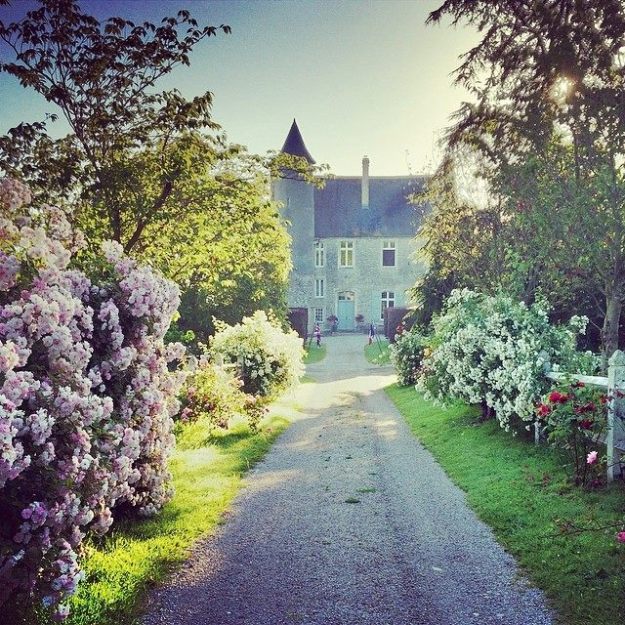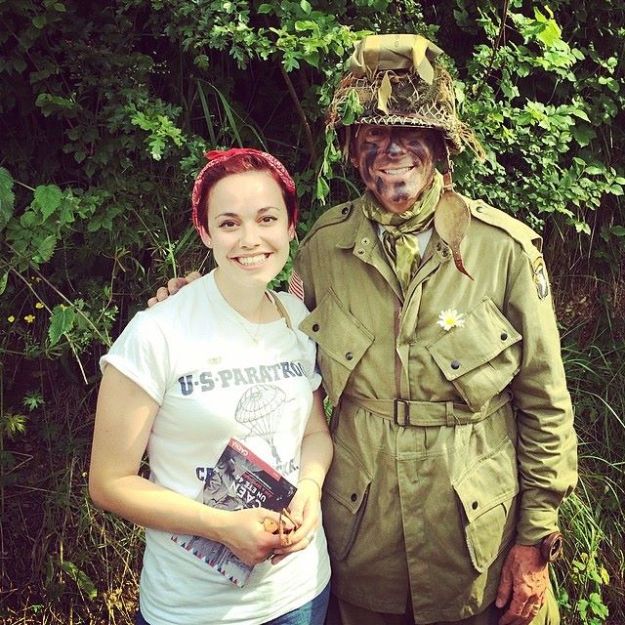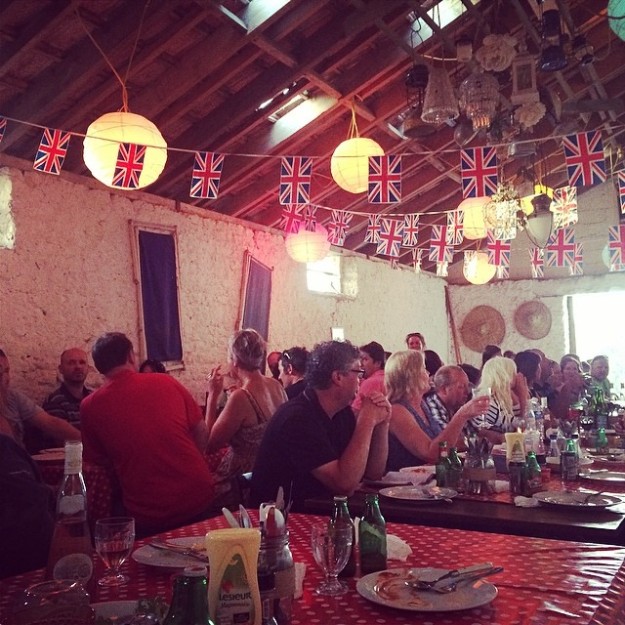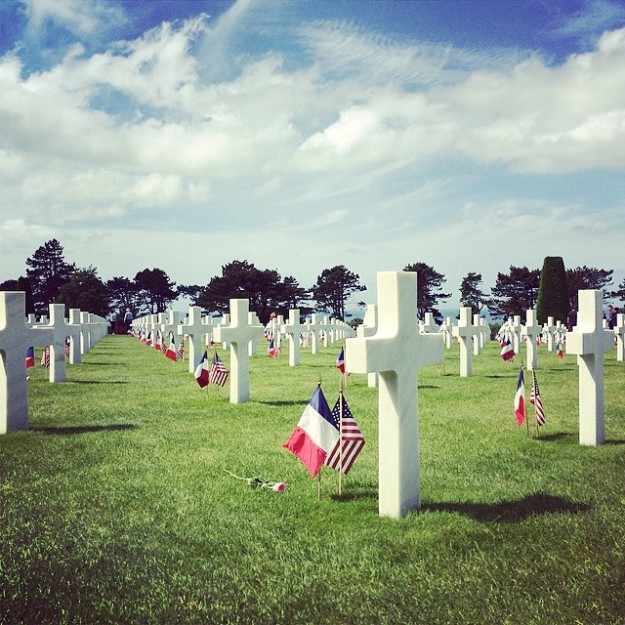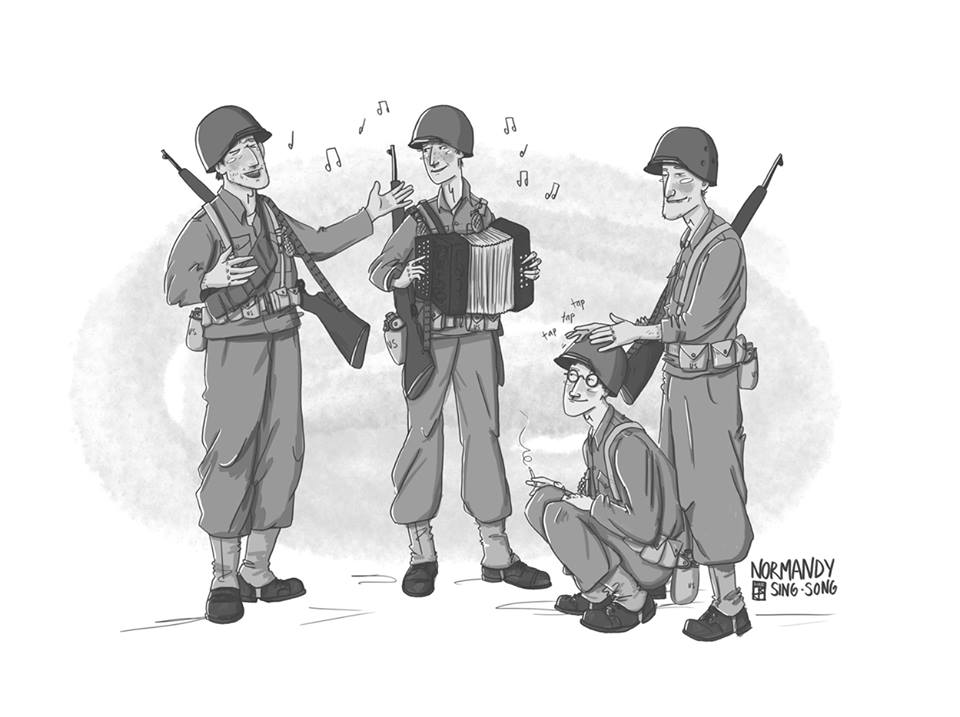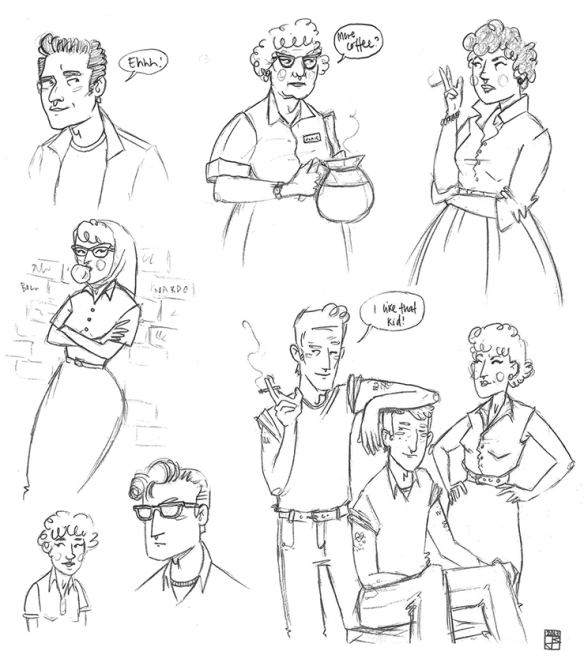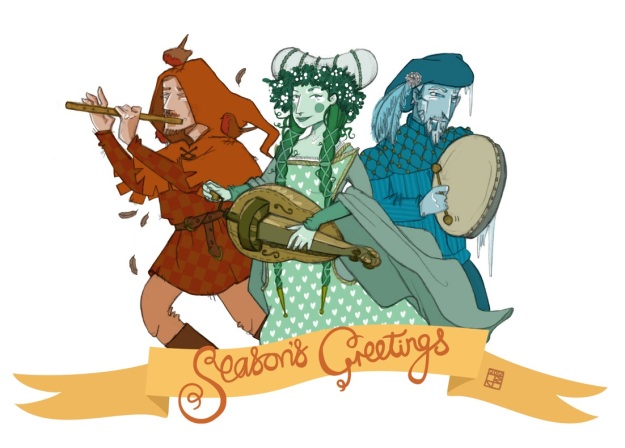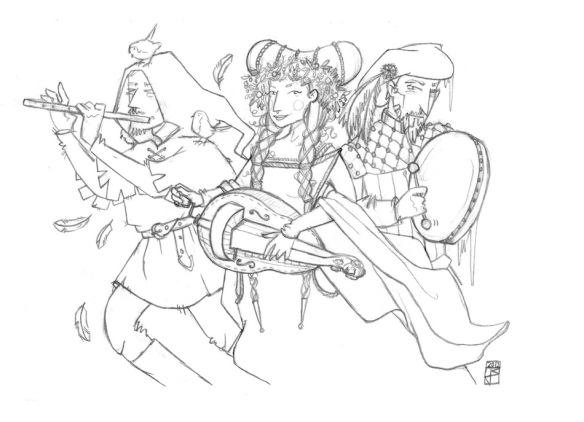Last night I returned home from a few days in Normandy to celebrate the 70th anniversary of Operation Overlord, or in other words, D-Day. I just want to write about it here so that I can get it all down, to remember it later.
I had wanted to go for years to see all of the places that I’ve read about for so long, and to pay tribute to the people who performed such extraordinary actions. It took quite a bit of planning (organising what started as 12 and ended in 9 people) and there were so many issues right up until the last moment that at one point it seemed as though I wouldn’t be able to join my friends there, after all that planning, but in the end everything came together.
I have serious withdrawal symptoms now. Everything seems….smaller. In comparison to the things we heard about or saw or felt over there. It felt like an incredibly privilege to be there, seventy years on. Somehow, I managed to pick us an absolute corker of a campsite, beautiful, friendly and full of lovely chatty people who were all there for the same reason.
I can’t put into words how I felt to walk the peaceful, windy Utah beach as the sun came up on the 6th of June, or stand the night before in a field above our beautiful campsite with 30 strangers suddenly become friends, and watch fireworks illuminate the 80 km stretch of landing beaches on the coast laid out before us. 70 years ago to the minute, the paratroopers and gliders were landing, scattered in that dark stretch of countryside, attempting to take key causeways, bridges and roads that were vital to opening up the Normandy countryside and get the troops off the beaches as soon as possible after the landings began that next morning.
Utah beach was a beautiful, peaceful place on the morning of the D-Day anniversary, and it felt surreal to walk there and think about the chaos of the landings (even though Utah beach would have already have been taken by the time we arrived, about 8.30am). There were still quite a few bunkers and fortifications that we got to look at, with out resident military history student Nick to give us a guided tour.
Walking further up the beach we came across a number of re-enactors (all French), and headed towards the museum at Utah where a ceremony was just finishing. As the few veterans came out and were applauded by the crowd I was very glad that I was wearing sunglasses because I was suddenly overwhelmed with the need to cry.
After Utah we headed to Sainte Mère Église, which was the key objective for the US Airborne in the early morning of D-Day. It’s also famous for the paratrooper John Steele who became caught on the church spire – a dummy paratrooper still hangs there to this day (don’t worry, he survived).
This was a big deal for me, being a bit of an Airborne fangirl. The paratroopers were the elite and the job they did was a heroic one (imagine parachuting into battle, which incidentally, had never been done before, carrying everything you need with you, often landing right on top of the enemy). There was a great US Airborne reenactment camp at Sainte Mère Église which was brilliant to walk around.
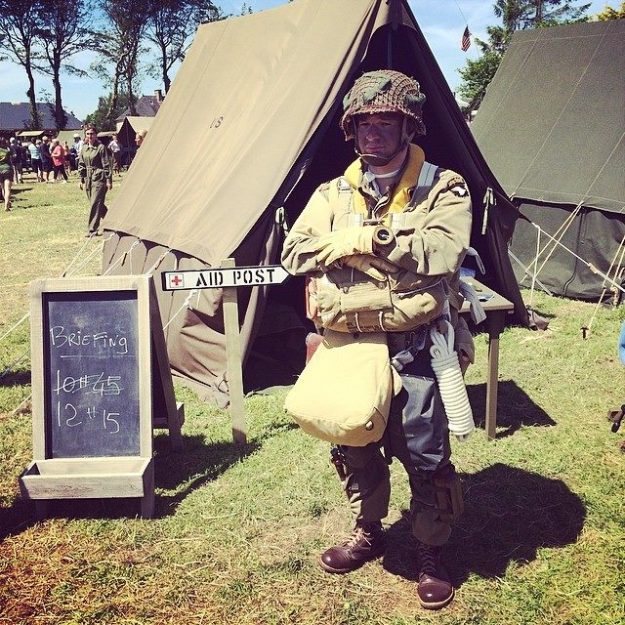 Here is the frenchman dressed as a US 101st Airborne trooper who saw my Camp Toccoa paratroop training camp t-shirt and said it “fit very well”.
Here is the frenchman dressed as a US 101st Airborne trooper who saw my Camp Toccoa paratroop training camp t-shirt and said it “fit very well”.
 Here’s my reaction:
Here’s my reaction:
 The Airborne Museum was a busy but brilliant place (containing lots of artefacts and displays, including an original horsa glider) and I’m so glad I got a chance to visit it.
The Airborne Museum was a busy but brilliant place (containing lots of artefacts and displays, including an original horsa glider) and I’m so glad I got a chance to visit it.
 Everywhere you went there were people dressed in period clothing, 1940s music floating out across the countryside, the low throttle of distant engines that rumbled into C-47s and C-130s roaring low over your heads, jeeps and trucks and motorbikes everywhere.
Everywhere you went there were people dressed in period clothing, 1940s music floating out across the countryside, the low throttle of distant engines that rumbled into C-47s and C-130s roaring low over your heads, jeeps and trucks and motorbikes everywhere.
 After this we stopped off at Grandcamp Maisy, a German trench and bunker system that is still being uncovered and cleared. It was great to talk to the “owner” (if that’s the correct term), a passionate amateur who has dedicated his life to uncovering this little-known (and from what he explained to us, quite a contentious amongst military historians) position.
After this we stopped off at Grandcamp Maisy, a German trench and bunker system that is still being uncovered and cleared. It was great to talk to the “owner” (if that’s the correct term), a passionate amateur who has dedicated his life to uncovering this little-known (and from what he explained to us, quite a contentious amongst military historians) position.
Also, here I bumped into an actual American dressed as a 101st Airborne paratrooper. He and his buddies saw my t-shirt and clicked their toy cricket (a little metal clicker that was given to the Airborne to identify each other in the dark) and I clicked back, which opened up the conversation. And I didn’t mind at all when he asked to have his picture taken with me…
After this we returned home hot, exhausted and sunburnt for a great group meal in the barn with the rest of the campers and the owners of the site. There were a couple of birthdays so cake was passed around, and my lovely friend Marie started up a little whip-round for the kids that had been serving us food and wine all night.
That night there was an awesome lightning storm at about 3am which was, frankly, terrifying. The ground literally shook and it felt like being in the midst of an artillery bombardment, the rumble of thunder and the flash of light was continuous for about an hour. Terrifying, but oddly fitting.
The second day we headed to Pointe du Hoc and Omaha beach, which was another vast sandy beach, though this time with rocky bluffs rather than the dunes of Utah (one of the reasons why it was such a bloody and long battle)
From there we walked miles down the sand towards the path up to the American Cemetery. Though packed with visitors it was still an incredible place, moving despite the people and the noise and the hot, sunny day. We found the graves of the unknown soldiers particularly moving, and I got especially choked up when I stumbled upon a grave marked with the name of my little brother. It struck me suddenly that he, being twenty years old, would have undoubtedly have been called up to fight somewhere. It was staggering to see the white crosses and stars stretching on into the distance, and despite seeing it in photos and on tv and film nothing could accurately depict the place itself.
There was so much I would have loved to have seen and didn’t get a chance to, but even this little taster was an incredible experience. Despite being fascinated with all the places that we saw, and the odd experience of being surrounded by re-enactors, it was still a very moving and emotional few days. The hot, sunny days on peaceful beaches and crowded villages both seemed to walk the line between commemoration of the lives lost and the unimaginable heroism of the men and women who took part, and the celebration of a country and people liberated. There were a few things that I felt could have been done better, despite how friendly and helpful the locals and the gendarmerie were – for instance there was so much that we would have loved to have seen but had no idea was taking place as there seemed to be no official website listing all the ceremonies, reenactments and events. But I can’t really complain. I’m in seriously withdrawal now. As my friend Tom mentioned earlier this morning, the things we saw and learned in Normandy for the 70th anniversary puts the details and drama of everyday life into startling perspective.
